Ackee and Saltfish Nutrition Facts: A Comprehensive Guide!
Ackee and saltfish is a flavorful Jamaican dish offering a wealth of nutritional benefits. It combines ackee, which is rich in vitamins and dietary fiber, with protein-packed saltfish.
This dish contributes to muscle maintenance and overall heart health when eaten in moderation.
Ackee, the national fruit of Jamaica, and saltfish, typically cod, come together in this iconic dish, each bringing their own set of nutrients. Ackee is loaded with vitamins, including vitamin C and B vitamins, and provides dietary fiber.
Saltfish, preserved through salting, is high in protein and can be a good addition to a balanced diet if desalted properly to reduce sodium content.
The nutritional profile includes:
Ackee and saltfish, a nutritious duo, perfectly blend taste with health, offering a meal rich in essential vitamins and protein.
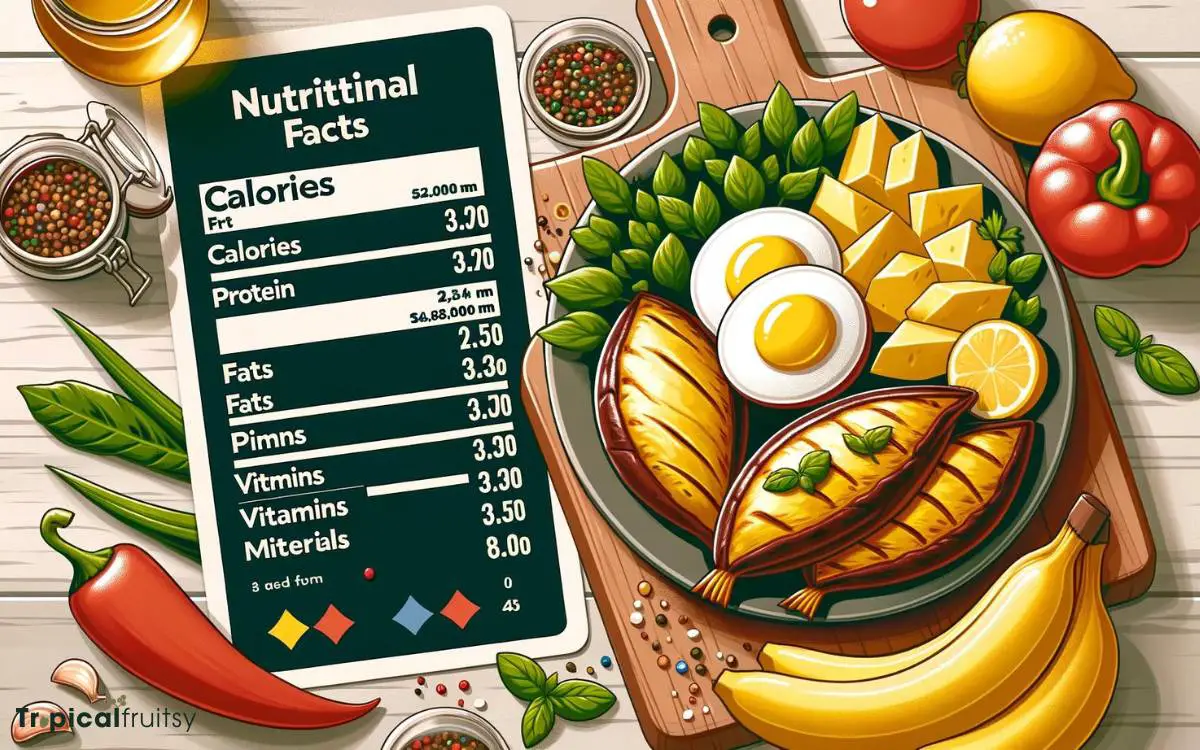
Key Takeaway
Nutritional Comparison of Ackee and Saltfish
| Nutrient | Ackee (per 100g) | Saltfish (per 100g) | Benefits |
|---|---|---|---|
| Energy | 151 kcal | 290 kcal | Provides energy |
| Protein | 2.9 g | 62.82 g | Supports muscle repair and growth |
| Total Fat | 15.2 g | 2.37 g | Aids in maintaining heart health |
| Saturated Fat | 2.1 g | 0.47 g | Contributes to balanced diet (in moderation) |
| Carbohydrates | 0 g | 0 g | Essential for energy (none in both) |
| Dietary Fiber | 2.7 g | 0 g | Promotes digestive health |
| Sugars | 0 g | 0 g | Reduces sugar intake (none in both) |
| Vitamin C | 30 mg | 0 mg | Supports immune system |
| Thiamin (B1) | 0.03 mg | 0.18 mg | Important for energy metabolism |
| Riboflavin (B2) | 0.1 mg | 0.26 mg | Aids in breaking down proteins, fats, carbohydrates |
| Niacin (B3) | 0.9 mg | 1.86 mg | Good for skin health and nervous system |
| Vitamin B6 | 0.2 mg | 0.16 mg | Important for brain health |
| Folate (B9) | 22 µg | 7 µg | Helps in forming DNA and RNA |
| Sodium | 0 mg | 4450 mg | Saltfish is high in sodium |
| Cholesterol | 0 mg | 152 mg | Necessary for producing hormones (in moderation) |
| Potassium | 280 mg | 948 mg | Essential for fluid balance and muscle function |
The History of Ackee and Saltfish
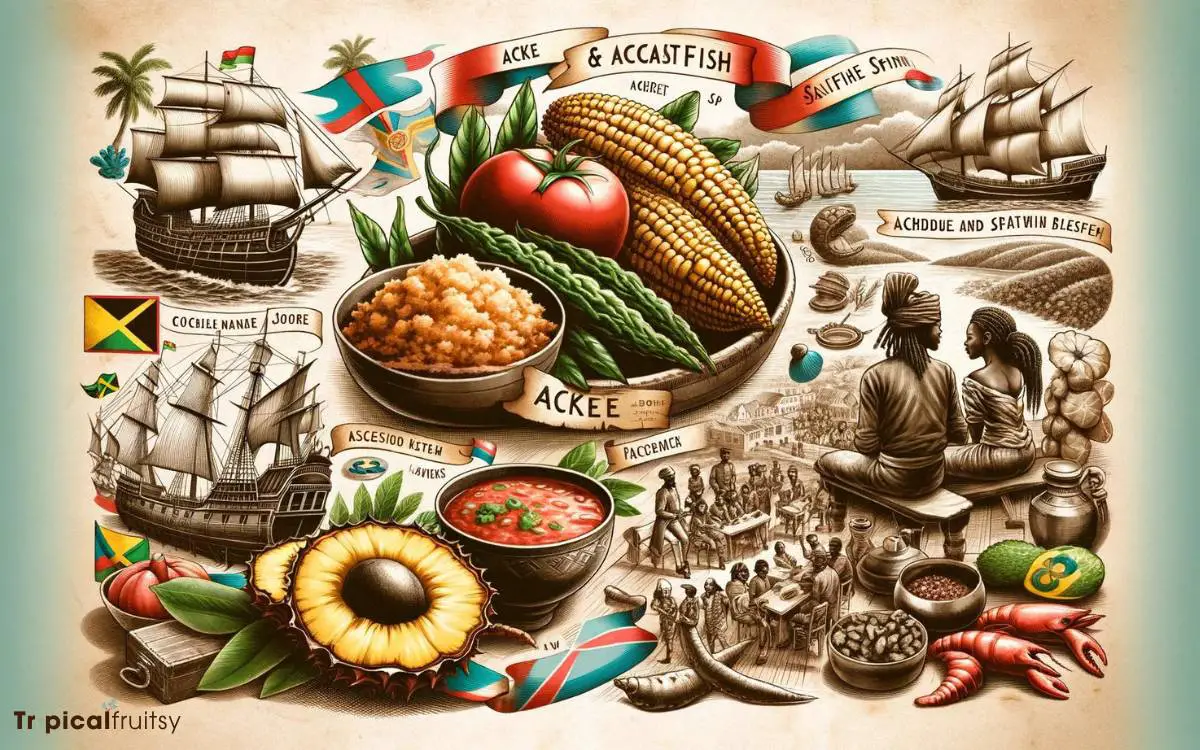
One must delve into the culinary heritage of Jamaica to trace the origins of ackee and saltfish, the country’s national dish.
Ackee, a fruit native to West Africa, arrived in Jamaica in the 18th century, likely brought by enslaved people. It wasn’t long before it became a staple in the local diet.
Saltfish, or salted cod, has its history intertwined with colonial trade practices. In the days before refrigeration, salting fish was a common preservation method.
The British, who colonized Jamaica from 1655 until 1962, imported salted cod from the maritime provinces of Canada.
Over time, the resourceful combination of locally available ackee and imported saltfish evolved into a traditional Jamaican dish, reflecting a blend of influences and a testament to the island’s complex history.
Key Nutrients in Ackee
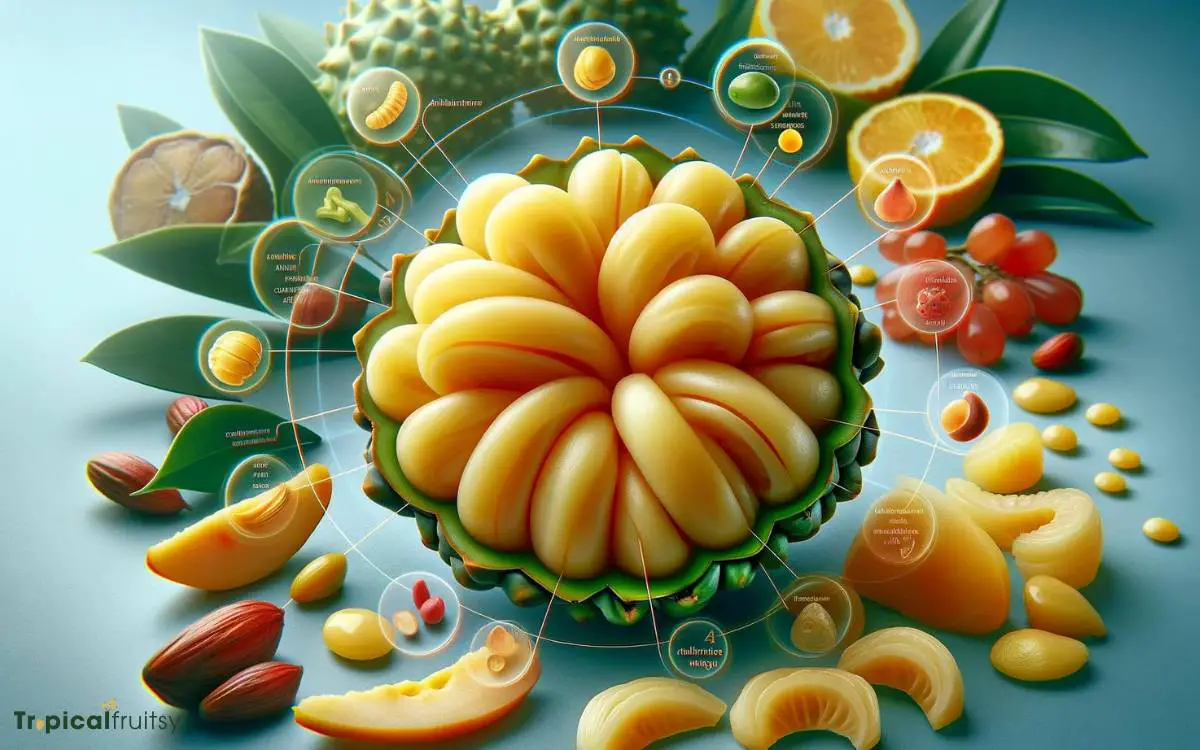
Ackee, one of two principal ingredients in Jamaica’s national dish, is rich in essential nutrients, including dietary fiber, vitamin C, and potassium. These components are crucial for maintaining various bodily functions and ensuring overall health.
Dietary fiber, for instance, aids in digestion and can help regulate blood sugar levels, while vitamin C is pivotal for immune system support and skin health. Potassium contributes to heart function, muscle contractions, and nerve signals.
Dietary Fiber:
- Promotes satiety
- Enhances gastrointestinal function
- Modulates blood glucose levels
Vitamin C:
- Essential for collagen synthesis
- Acts as an antioxidant
- Supports immune defense mechanisms
Potassium:
- Regulates fluid balance
- Maintains electrical gradients in nerves
- Influences blood pressure control
Saltfish: A Protein Powerhouse
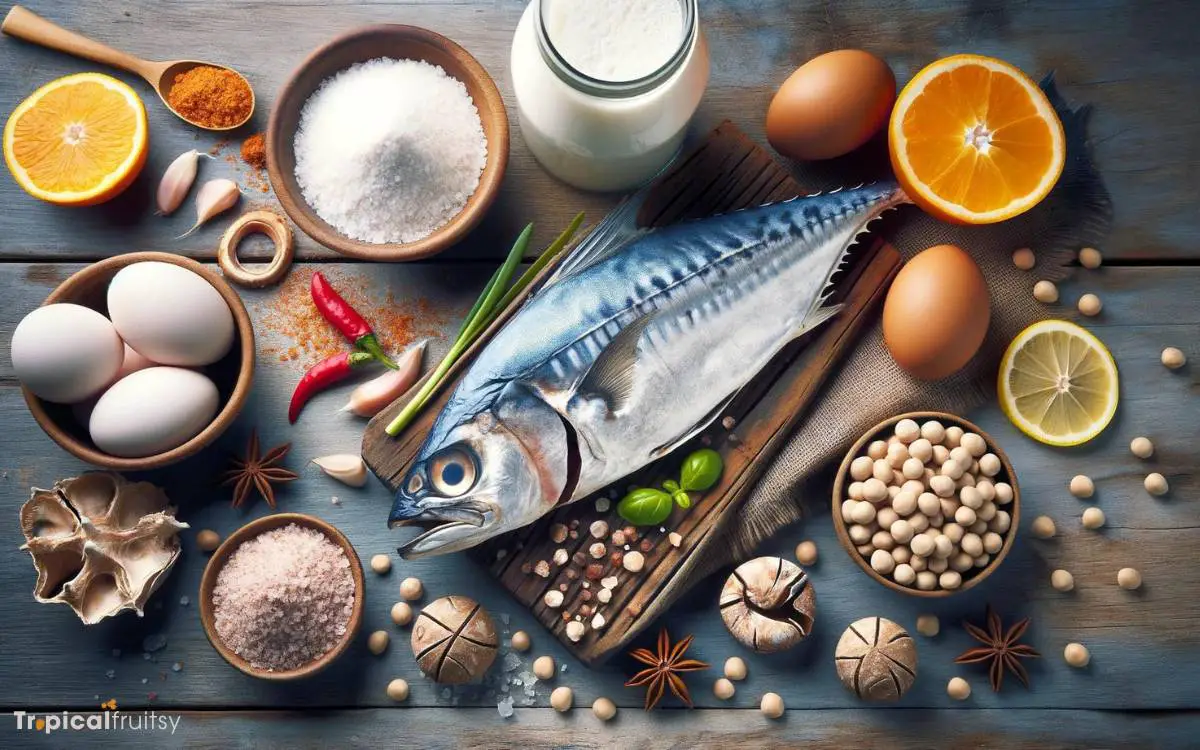
While ackee contributes valuable vitamins and minerals to the dish, saltfish is renowned for its high protein content, which is essential for muscle repair and growth.
Saltfish, or dried and salted cod, is traditionally soaked to remove excess salt before cooking, which helps preserve its nutritional value.
Each serving of saltfish is a dense source of high-quality protein, providing amino acids necessary for various bodily functions.
| Nutrient | Amount per Serving | % Daily Value* |
|---|---|---|
| Protein | 36g | 72% |
| Sodium | 667mg | 28% |
| Vitamin B12 | 2.88µg | 120% |
| Selenium | 36.5µg | 52% |
| Phosphorus | 387mg | 39% |
Saltfish’s significant protein contribution complements ackee’s nutritional profile perfectly.
As we turn to the health benefits of the dish, the protein in saltfish not only supports muscle maintenance but also synergizes with healthy fats to optimize overall wellness.
Benefits of Healthy Fats
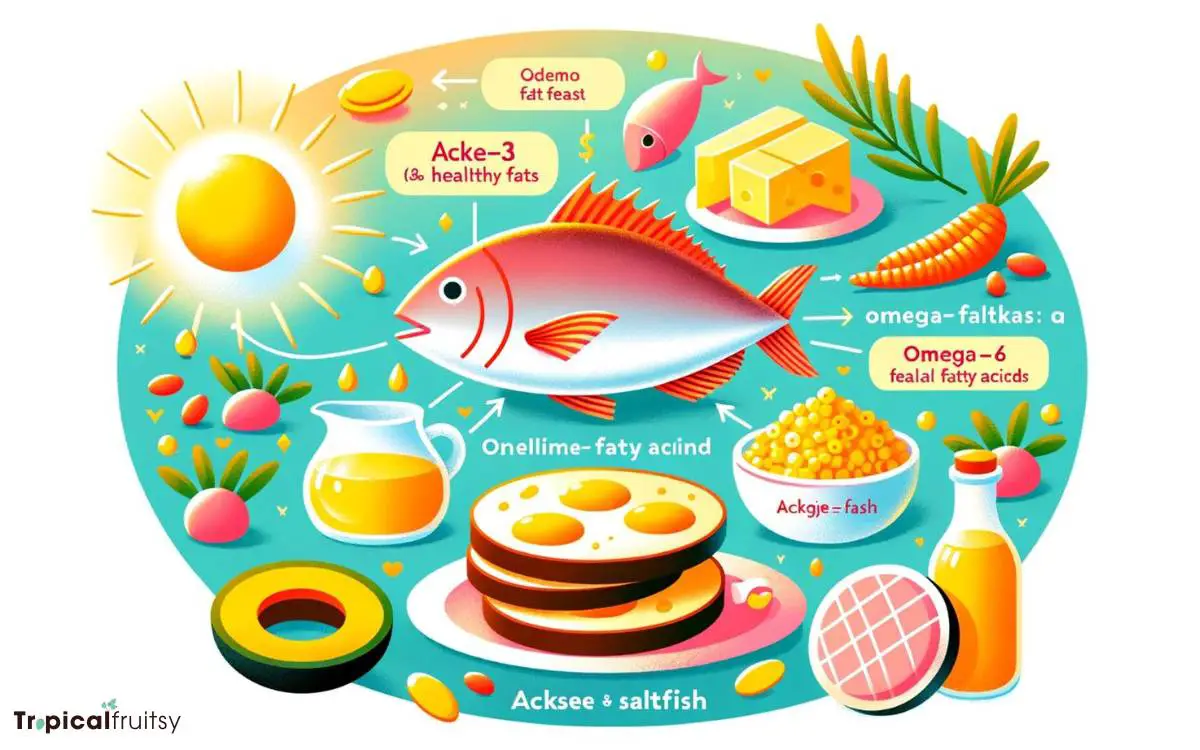
In addition to its high protein content, ackee and saltfish is a dish that incorporates healthy fats, which are crucial for maintaining heart health and supporting cell function.
These fats include:
Monounsaturated fats:
- Olive oil used in cooking can provide these heart-healthy fats.
- They are known to reduce bad cholesterol levels and increase good cholesterol.
Polyunsaturated fats:
- Include omega-3 and omega-6 fatty acids found in fish.
- Vital for brain function and cell growth.
Saturated fats:
- Present in moderate amounts in saltfish.
- Should be consumed in balance with other fats to maintain health.
The inclusion of healthy fats ensures that the dish not only satisfies hunger but also nourishes the body comprehensively.
Essential Vitamins and Minerals
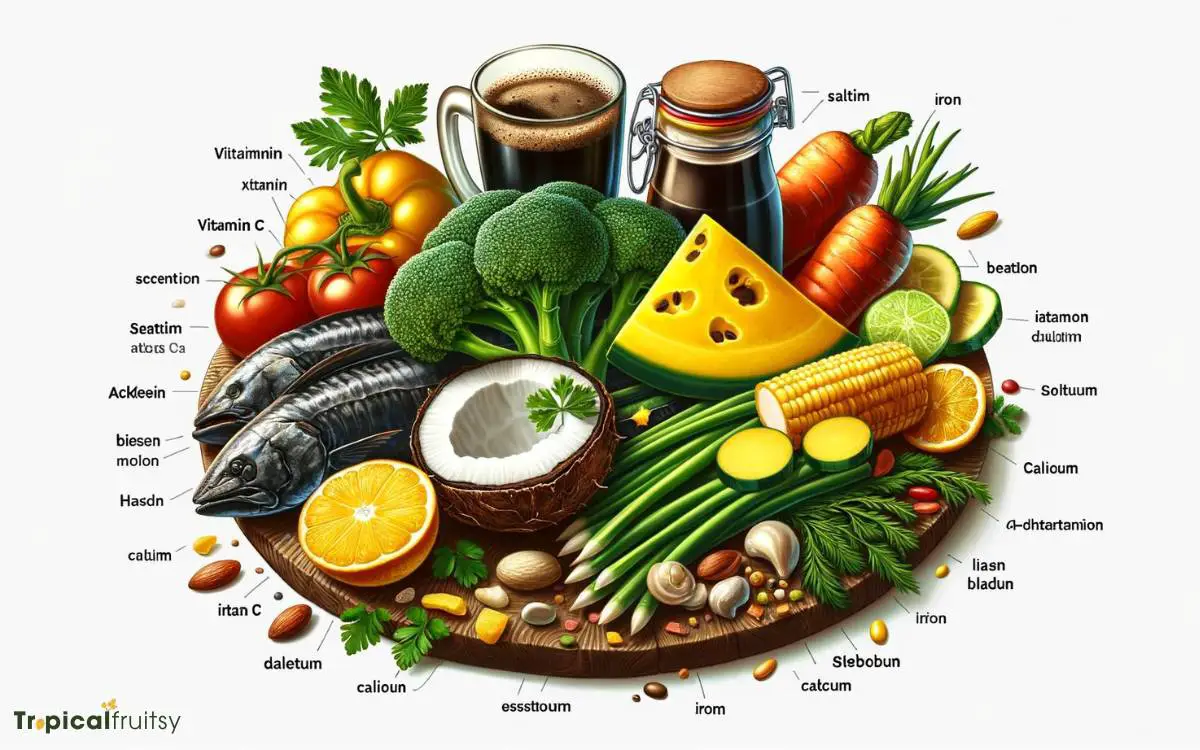
Ackee and saltfish, a traditional Jamaican dish, not only provides a savory flavor but also a range of essential vitamins and minerals crucial for maintaining good health.
The vitamin B profile in ackee contributes to energy metabolism and brain function, while saltfish offers a significant source of vitamins D and B12, essential for bone health and neurological function respectively.
A detailed mineral content analysis reveals that this dish is rich in minerals such as phosphorus, potassium, and iron, which are vital for maintaining strong bones, proper muscle function, and oxygen transport in the blood.
Vitamin B Profile
Regarding the essential nutrient content of ackee and saltfish, this dish provides a range of B vitamins, which are crucial for maintaining energy levels and supporting cellular health. The B vitamins serve as coenzymes in a myriad of metabolic processes.
Here’s a closer look at the B vitamin profile in ackee and saltfish:
Vitamin B1 (Thiamine):
- Essential for glucose metabolism
- Supports nerve, muscle, and heart function
Vitamin B2 (Riboflavin):
- Vital for energy production
- Helps in the breakdown of fats, drugs, and steroids
Vitamin B3 (Niacin):
- Promotes skin health
- Involved in DNA repair and stress responses
Each of these vitamins contributes to the overall nutritional value of the dish, enhancing its reputation as a healthful meal option.
Mineral Content Analysis
The mineral composition of ackee and saltfish includes several key elements, such as iron, calcium, and phosphorus, which are vital for bone health, oxygen transport, and energy metabolism.
Ackee, being a fruit, contributes notably to the dietary intake of these minerals, particularly potassium, which is essential for maintaining proper heart function and regulating blood pressure.
Saltfish, a preserved form of cod, provides a substantial amount of sodium, necessary for fluid balance and nerve function, but should be consumed in moderation due to the potential risks associated with high sodium intake.
Zinc, found in both ackee and saltfish, supports immune function and wound healing. Moreover, the dish provides magnesium, crucial for muscle function and maintaining a healthy immune system.
This nutrient synergy underscores the importance of a balanced diet for optimal health.
Dietary Fiber and Digestive Health
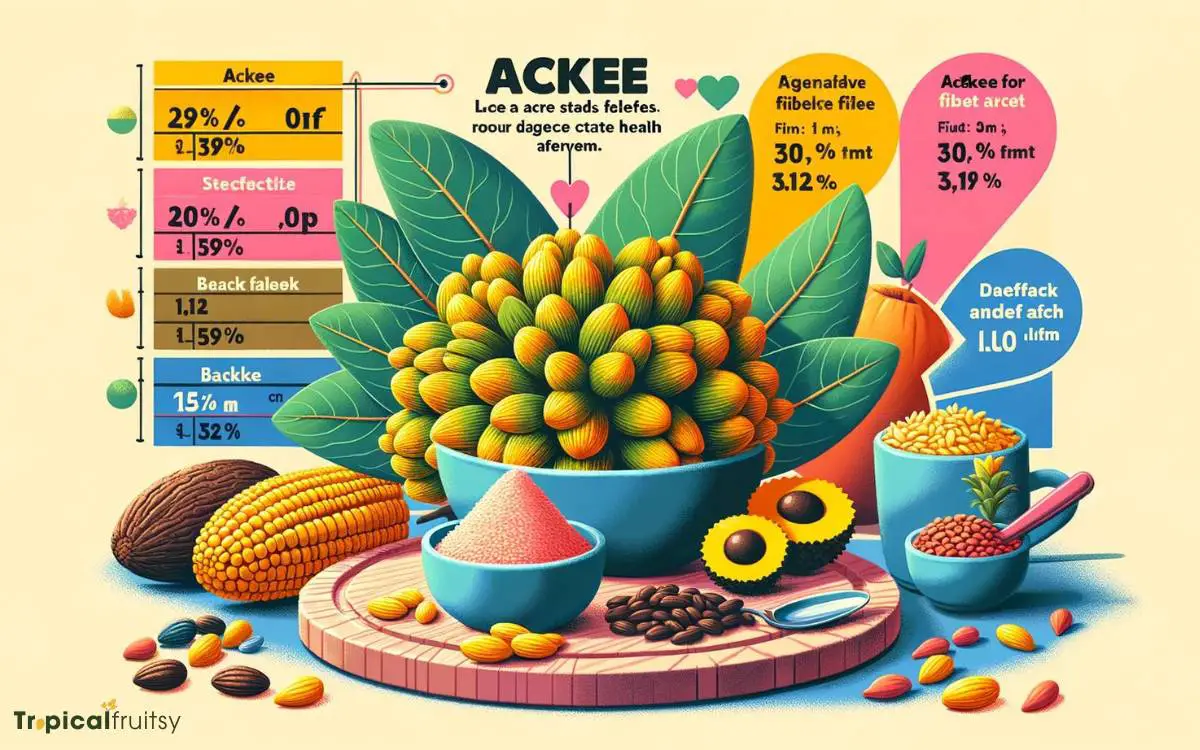
Within the context of digestive health, the dietary fiber content in ackee and saltfish plays a crucial role in maintaining regular bowel movements and preventing constipation.
Fiber, an indigestible component, facilitates the smooth transit of food through the digestive tract. Ackee, being a fruit, contains a considerable amount of fiber.
Fiber’s Impact on Digestion:
- Enhances stool bulk
- Softens stool consistency
- Promotes ease of passage
The combination in this dish offers a balance of nutrients while contributing to the overall fiber intake recommended for adults, which is between 25 and 30 grams per day.
Consuming meals like ackee and saltfish, which contain dietary fiber, is beneficial for long-term digestive health and can help in preventing common gastrointestinal issues.
Balancing Calories and Portions
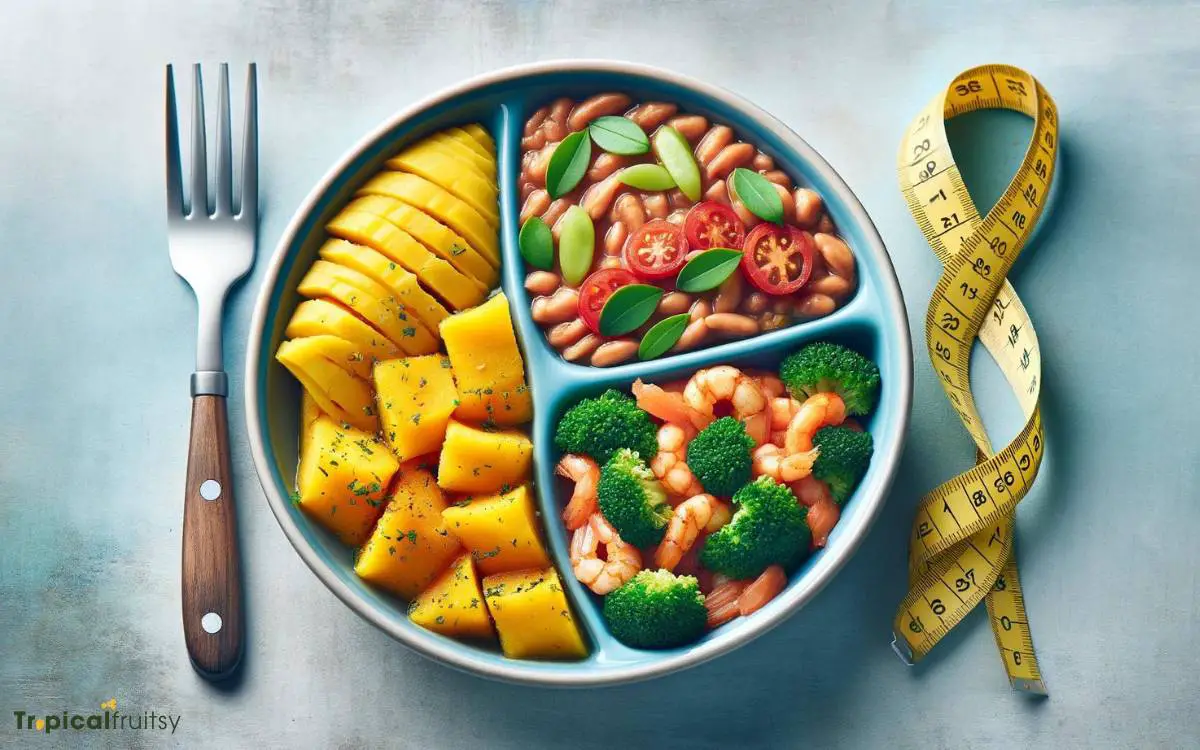
When considering the nutritional impact of ackee and saltfish, it is vital to assess the caloric content of typical servings to maintain a balanced diet.
The recommended portion size can significantly influence the meal’s energy contribution, aligning with dietary guidelines suited to individual energy requirements.
Providing clear guidance on energy balance can help consumers make informed decisions to manage their caloric intake while enjoying this traditional dish.
Caloric Content Analysis
Analyzing the caloric content of ackee and saltfish is essential for individuals monitoring their dietary intake to ensure a balance between energy consumption and portion sizes.
This traditional Jamaican dish, when prepared mindfully, can fit into a health-conscious diet.
Ackee:
- A low-calorie fruit, ackee provides a mere 151 calories per 100 grams.
- Rich in fiber and healthy fats, it contributes to satiety.
Saltfish:
- Typically cod, saltfish is a protein-rich component with 290 calories per 100 grams.
- Salt content can be high, which requires careful rinsing and soaking to reduce sodium levels.
Accompaniments:
- Often served with breadfruit, dumplings, or rice, which increase the caloric density of the meal.
- Portion control is vital, as these additions can quickly escalate the total calorie count.
Consuming appropriate portion sizes while considering the caloric content helps maintain a balanced diet.
Portion Size Recommendations
Every serving of ackee and saltfish should be carefully measured, as appropriate portion sizes are crucial for balancing nutritional needs with calorie intake.
To maintain a healthy diet, it is important to understand the recommended serving sizes and how they fit into your daily caloric requirements.
The table below outlines a guideline for portion sizes, providing a visual aid to better comprehend the appropriate amounts to consume in one sitting:
| Portion Size (cups) | Approximate Calories |
|---|---|
| 1/2 cup ackee | 150 |
| 1/2 cup saltfish | 100 |
| 1 cup mixed dish | 250 |
| 1 tablespoon oil (for cooking) | 120 |
These measurements offer a balanced approach to enjoying ackee and saltfish while managing caloric intake. Next, let’s delve into some practical energy balance tips that can help you enjoy this traditional dish responsibly.
Energy Balance Tips
Maintaining energy balance requires careful monitoring of calorie intake and expenditure, especially when consuming nutrient-dense dishes like ackee and saltfish.
To achieve this:
- Monitor Portion Sizes
- Picture a plate divided into sections, with half filled with vegetables, one quarter with lean protein such as saltfish, and the last quarter with starchy foods or ackee.
- Understand Caloric Density
- Visualize ackee as a calorie-dense fruit, meaning small volumes carry high energy. Balance it with lower-calorie companions.
- Increase Physical Activity
- Imagine incorporating activities like walking or swimming into your routine, enhancing calorie burn to match your intake.
How Can I Pair Ackee and Saltfish with Nutritious Side Dishes?
Preparing a Healthier Dish
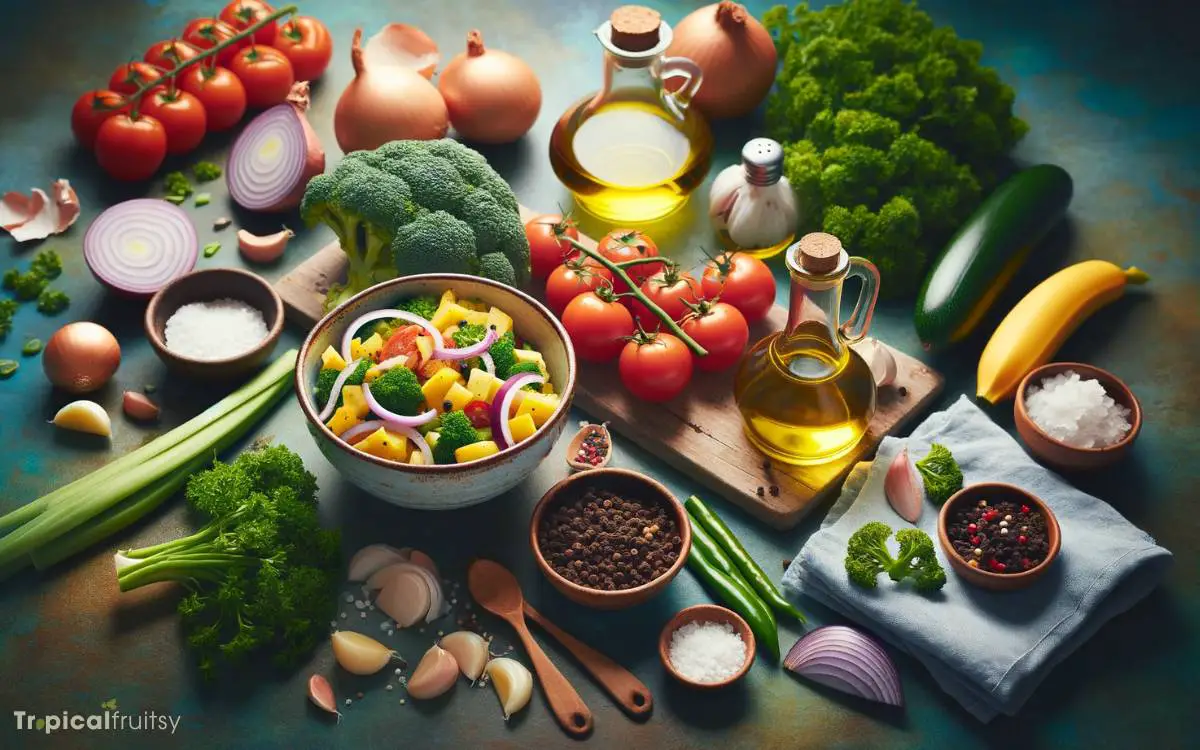
To optimize the nutritional value of ackee and saltfish, careful consideration must be given to the ingredients and cooking methods employed.
The traditional recipe can be high in sodium due to the salt-cured fish. To reduce this, one can soak the saltfish in water for an extended period or repeatedly change the soaking water to extract excess salt.
Utilizing fresh, unsalted fish is another healthier alternative that substantially lowers sodium content while still providing essential omega-3 fatty acids.
When preparing the ackee, it is crucial to ensure that it is fully ripe and properly cooked to avoid the naturally occurring toxic substance, hypoglycin A.
Moreover, sautéing the dish in a minimal amount of heart-healthy oil, such as olive or avocado oil, instead of traditional animal fats can decrease the dish’s saturated fat content, enhancing its overall nutritional profile.
Conclusion
Ackee and saltfish serves as a significant source of sustenance, supplying a symphony of essential nutrients.
This traditional dish delivers a dynamic duo of dietary fiber and protein, accompanied by a variety of vital vitamins and minerals.
When prepared with prudence, it presents a palate-pleasing plate that promotes physical well-being, reflecting the rich cultural history and nutritional knowledge embedded within its flavorsome folds.






